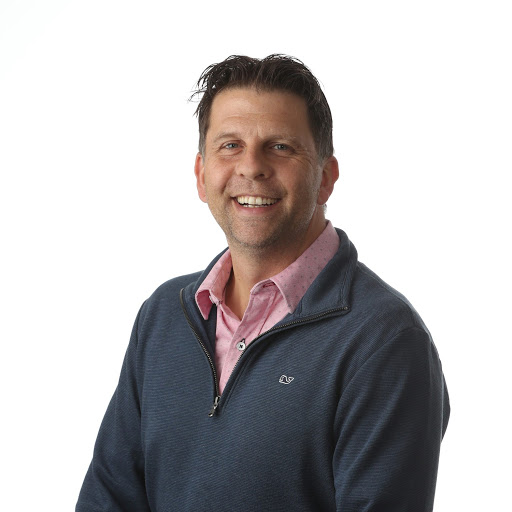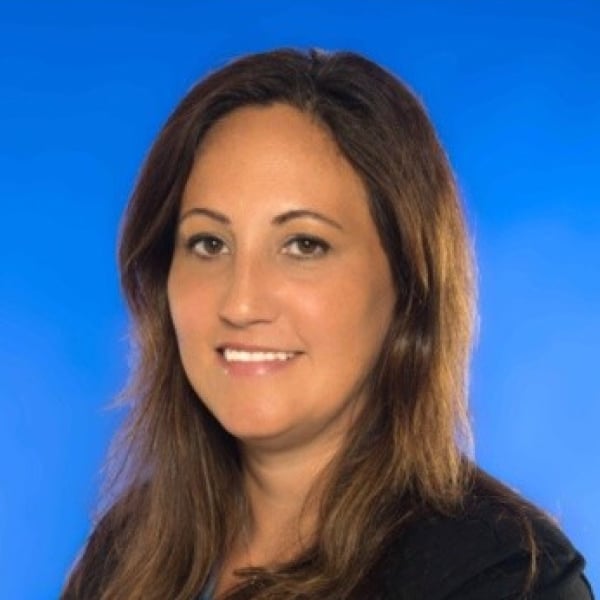Why & How to Use Rapid Testing in Marketing
Tom Madrilejos
UX/UI Designer at Tenlo
Strategist and UX Designer, Tom Madrilejos, joins Tessa Burg to discuss the “whys” and “hows” of Rapid Testing.
Tom shares his experiences executing these small, affordable tests for clients during the past year. He also reveals how to launch a rapid test to evaluate new-to-market products, marketing channels and a variety of marketing tactics.
In this episode, learn how to gain richer customer insights and predictable marketing results in weeks – rather than months – without overspending.
Highlights From This Episode:
- The benefits of using rapid testing in marketing
- Examples of marketing channels and tactics you can evaluate with rapid testing
- The step-by-step process to execute your own rapid marketing test
Paul Roberts: Hey. Welcome to another episode of rapidtesting.ai. Sure way to help B2B and CPG marketers generate data that turns into money, like real money. Well, and the one woman who’s going to tell us how to do that, Tessa Burg, she’s the vice president of UX & Technology Strategy at Tenlo. Tessa and her team at Tenlo, have collaborated with data science, software and marketing experts in the last 10 years to develop and continuously evolve. How rapid testing can effectively and efficiently help clients bring new products to market. And today she’s brought with you who? Welcome Tessa. Who’d you bring with you?
Tessa Burg: Hello. I brought Tom Madrilejos, and he is a UX designer and strategist here at Tenlo.
Tomas Madrilejos: Hello, hello.
Paul Roberts: Well, welcome to both of you. So what are we going to talk about here today? Are we going to talk about why and how to use rapid testing? That’s what I was told.
Tessa Burg: Yes. Well, you heard right. Last episode, we got into how to get executive buy-in to try new digital initiatives. And in this episode, we’re going to talk to Tom. Who’s been executing the rapid testing process for about a year, maybe a little longer now, into why do we use it and how to get started?
Paul Roberts: Okay, well, let’s get started and let you guys roll.
Tessa Burg: Awesome. So Tom, I think a good place to start is what is rapid testing? How would you define it?
Tomas Madrilejos: Rapid testing, I don’t have a good like dictionary definition of it. And I know you’ve had a lot of experience that helps you kind of bring you to a process that is rapid testing, but I find a lot of value in looking at it as an approach to marketing that takes a really productive amount of research and turns that into a useful set of hypotheses that can be quickly tested with the goal of making informed decisions to help you meet your real world marketing and sales goals.
Tessa Burg: I think that was a pretty good definition. So how is that different than just running a marketing campaign? Like why wouldn’t I just stand something up and push go, since a lot of digital tools are so easy?
Tomas Madrilejos: So I think one of the biggest things, and maybe it’s a tenant that it’s getting from agile marketing, but it’s that we have a discipline at our company where we become more adaptive, more collaborative, and more iterative in our work. So in a world where Google changes frequently, social and hub platforms change frequently, and people are expecting tons and tons of content. You need to be adaptable if you want to be successful, if you want to be relevant in today’s digital climate. And so that’s why we use it and promote it.
Tessa Burg: Awesome. Speaking of when we use it, when do we recommend rapid testing and why? Like, how do you know a client or a project or a new product launch is a good fit for this process?
Tomas Madrilejos: So in my experience, I think there’s a variety of reasons to start with the rapid test, especially within paid. Sometimes with a new product you’re starting from scratch. You don’t have like historical data, but don’t want to be stuck in analysis paralysis. You need to start somewhere. Rapid testing is like a relatively quick, low risk way to get quick learnings about the realities of bringing a new or existing product to market digitally. So the big value, in my opinion, is firmer ground from which to make your early decisions, which they’re always going to be early iterations early pivoting with the new product.
I guess if other times, if you’re actively selling online already, but you’re wondering if you can get an incremental lift in sales, using channels like paid search or social. And even if maybe you’re a marketer who is already active in those channels, you want to know how you can make that spend more efficient and more effective. This is maybe more of a tangent, but don’t necessarily trust the recommendations, the built in recommendations within your paid platform, at least not to run on autopilot. And that’s another discussion altogether. I know you can talk all day about that. And I guess maybe my first recommendation at the talk is if anyone wants to listen to Wil Reynolds from Seer Interactive, he’s in SEO. He can talk all day about that exact scenario.
Tessa Burg: I think it’s always important to recognize that Google’s in the business to make money and they’re making the money off of you.
Tomas Madrilejos: And your clients! The last one, I guess I’ll just toss in there because I have a background in creative. A lot of times companies will want to know what kind of messaging or aesthetic will resonate with a specific audience and a specific channel. And there’s a lot of traditional and old school methods. Back in the day, there was like focus groups and surveys that help provide a glimpse specifically around hypothetical situations or screened individuals. We’re calling, past behavior, but rapid testing, it takes it to the next level a little bit further because it’s authentic, real time decision making. So it’s real people on their buyer journey letting you know by their behavior what’s working and what’s not. So that’s why again, why we try to do it as much as possible.
Tessa Burg: That’s awesome. So I think what would help make this more concrete for the audience is some examples. Do you have a couple of examples of where we’ve used rapid testing to help someone test a hypothesis or a question, or maybe an assumption they didn’t even know they were making? Could you dive a little bit deeper into a story for us, Tom?
Tomas Madrilejos: Yeah, I have a couple. I have one that’s more holistic and then I have one that was, the first one is a little bit more holistic where we saw something through to completion and it was where we intended it to go. And then I have another example of a campaign where we had our assumptions and we were actually wrong and the results were extremely valuable and where to spend that money better. And we did it really quickly, either one, which one do you prefer?
Tessa Burg: Let’s start with the first one, the longer end to end one.
Tomas Madrilejos: First one, okay. We were engaged with a new product launch approaching a year and a half, maybe two years ago, where we had this new product that was really fun and really unique. It was a game like a physical real life game, a hybrid between beer pong and Connect Four. Shout out to Russell from Battle Toss. He’s great. One of my favorite people we’ve worked with all time, best guy.
Tessa Burg: He is fantastic.
Tomas Madrilejos: Designed and built something from scratch, invested his time and sweat. And basically he wanted validation on whether to produce this thing at scale. There’s a whole long story here and I’m going to really summarize, but with a small investment, some bootstrapping and all hands on deck moments, we were able to research, craft a plan and approach, test and validate the products, initial positioning and key messaging among many, many other things in a month. And I mean, the other things were including like building an MVP website, coordinating and hosting a live tournament, getting video and photo assets because we didn’t have any. And then of course mastering the game, which we won the tournament by the way.
Tessa Burg: Nice.
Tomas Madrilejos: But rapid testing was huge specifically, I guess if you want me to go a little bit more deep into it, a paid search. So we took a really hard to define game, narrowed it down to specific categories and audiences, and then used the targeting combined with key language to deliver what we thought was the optimal message for the most likely to purchase now audience. And we did that on a startup budget for the initial launch, with a ton of takeaways and learnings to apply elsewhere.
Tessa Burg: What they need and what they need next.
Paul Roberts: All right. So stick around. We’ll get more on rapidtesting.ai right after this. And we just want to, again, remind you that rapidtesting.ai is the newest show on Tenlo radio. It’s being syndicated here on funnel radio channel and over other stations like OC talk radio here in Orange County, it’s brought to you by Tenlo. Tenlo is a pipeline marketing agency that focused on quickly identifying and converting high value leads. That’s the key. Don’t just find them. You’ve got to do something with them. Visit Tenlo.com to learn how you can use this magical digital marketing process to get more out of your trade shows, website, and sales support groups. It’s all waiting for you at Tenlo.com. Just like it sounds T E N L O. Tenlo.com.
Tessa Burg: So you said a lot and I think there’s some really key points to pull out. One, you said in a month, and I think that’s an important tenant of rapid testing. If you’re setting up a test to be longer than a month, is it safe to say it’s probably too big?
Tomas Madrilejos: Yeah. There’s a couple of things. It depends on the campaign, but sometimes it’s like, well, what are you really testing at that point? Is it too many things? Is it really focused? And the other thing is specifically for product launches or new products. It’s interesting to see how much stake people can put in on something at stage. And I guess I’ll step back and say that, I guess it’s a common pitfall with running like expedited campaigns is putting a lot of stock or weight into a deliverable that has the opportunity to be really quick or low stakes, if that makes sense. So you can accomplish what you want to learn and you don’t need that much time.
Tessa Burg: So how do you narrow that down? Like how do you make sure that you’re testing the right things in the beginning?
Tomas Madrilejos: So that comes down to really, really taking into consideration how important your research stage is. So for myself, I would say that it’s pretty common to see people and neglect like the customer journey. You really, really always have to start at the customer journey. So forgetting to ask what is our intended audience doing in X channel in relation to our product or around a particular need state and skipping that, and say do Facebook because we need to be there. So I guess starting off, you need to lay out what you think the customer journey looks like. Everything should be considered within that context. And then there’s a variety of steps to go from there if you jump in, but that’s where I would start.
Tessa Burg: Yeah, no, I think that’s a great answer. And I agree a lot of times people do the first phase of research and find, Hey our customers are on Facebook, so we should be there. But the question you ask is what’s going to get them to buy and where do we deliver that by benefit? And that kind of, I think for all of us, kind of narrows down then, okay, what’s this test need to look like, right? Oh, well we didn’t do the short test. What was the test where we were wrong? Which happens.
Tomas Madrilejos: It’s great to be wrong! It’s not wrong. It’s called a learning moment. So there’s a case, and marketers will understand this. We were engaged to run paid search, to help create brand awareness around a company’s initiative. And from our experience and from best practices, we know that paid search, creating brand awareness through a paid medium like paid search, may not necessarily yield the results that you expect in this case it was sales of a particular beverage product. I mean, just at that time, looking at the customer journey, what we were bidding on, it’s too broad of a keyword, too early in the journey to predict anything, too many paths for the customer to take, really difficult, to provide, to prove the ROI round, but you don’t know until you test. So, and sometimes you don’t have a choice. So with rapid testing, we were able to quickly, maybe within 10 days, a little bit more than 10 days, we were able to rule out that tactic, rule-out running that at scale. And with data to back that up, this is exactly why you don’t want to do this.
What was even better than being able to say like, this is why you wouldn’t do this, were the additional hypothesis that came out of that in a short time. So as we continue to monitor the campaign, we also look back at our sales team research stakeholder interviews that we did earlier in the year, we took a look at the journey again. And we came out with another short test, an iteration on this, where we used sustainability language as a primary benefit on a select group of really high performing products. So there were products that were doing really well in paid search over a long period of time. And we elevated sustainability on those products as a key driver on there. And I was confident that it would increase because everybody likes that aspect of a brand.
It’s a good thing. It’s a positive and the results were actually, no, it didn’t, not in paid search. It actually made the ads more expensive and had no significant change on the conversion rate. So this actually validated what the sales team were saying, and what was really important is that in a really quick time, and with a really limited spend, we knew that we didn’t need to invest a lot of budget into that channel for that initiative going forward specifically for that product line. It could be different for other products. But this one, we confidently know that we can allocate that budget and use it better elsewhere.
Tessa Burg: So if I were to summarize what we’ve talked about so far with rapid testing is one, you need some initial research to ask questions against. So for the Battle Toss it’s, we have an idea who the customer might be, what their journey looks like. And now we’re going to test what’s the right message at each step in the journey to get them to buy. The second thing is, keep it very focused, priority questions, and create a lot of different iterations in a few key channels and make those calls early. So in your short example, the call was made that this wasn’t working in less than two weeks. And what’s the impact of that on the budget when these are such focused short tests?
Tomas Madrilejos: So the impact is that, first of all, it’s not wasted. And then you can confidently feel good about reallocating or moving on or trying something different, which is always a plus.
Tessa Burg: How do you know, yes, this for sure won, or no, this failed?
Tomas Madrilejos: Yeah. So statistical significance is how you can know when to end the test. So you don’t need to run this campaign for three months, six months, eight months, when you have enough of a population that’s representative and there’s enough differentiation in the test, then you can feel confident that that decision was a step in the right direction. No test is going to tell you the answer. No test is going to tell you exactly. What’s perfect. It is going to give you a step in the right direction from which to make more decisions from, which is, I think the power of it.
Tessa Burg: So words like statistical significance, assumptions, testing, all of that jazz sounds a little complicated. Where can people go to start learning how to do this? Or how can they get started?
Tomas Madrilejos: Yeah, it’s interesting. I was going to say a minute ago, is that you’re probably going to hear a lot about like an emphasis on research or documenting your early assumptions and diving into the customer journey and really knowing your products brought to market. And there’s a reason for that. And it’s the research is so important, and there’s so many kinds of research ,and I’m actually finishing up a book called Just Enough Research by Erika Hall. You’re a UX designer or a product manager, it’s one of my early recommendations, really easy read. But you can spend a lot of time testing or working on something that’s not productive or fruitful, and you can do all the right configuration. You can manage the campaigns perfectly execute perfectly, but if you’re not working on the right problem or at least not a shared goal, then what’s the point. So narrowing down on the right question, that’s agreed on, and supports your sales goal is the first step.
So I think I said before, lay out what you think the customer journey looks like, start with what you know, what experience you have, and then do your stakeholder interviews. One of the things in our field, if you have a sales team available to you, have them validate your interpretation of the journey. With probing questions, great salespeople can give you a ton of rich insights that help tell you what gets a prospect to the sale. And I know I’m short on time here, but there’s a lot of steps.
Tessa Burg: And speaking of that, this podcast is sort of, we’ve run dozens of these tests this past year, we will be putting up an ebook and workshops on the website soon at Tenlo.com that details the steps, it makes it a little bit more accessible.
Tomas Madrilejos: Yeah. Like one of the things we’ll have soon is just a short Eguide on configuring to be the most efficient and look out for that soon.
Paul Roberts: Okay. How do they reach you? If anybody wants to learn more?
Tessa Burg: Go to Tenlo.com or shoot us an email at Tessa@Tenlo or Tom@Tenlo.
Paul Roberts: Okay. Thanks so much. We’ll see you next time.
Tomas Madrilejos: All right.
Tessa Burg: Thank you!
Tom Madrilejos
UX/UI Designer at Tenlo
Tom’s vast knowledge of creative, immersive technology and UX/UI guides his strategic thinking. His knowledge-hungry attitude drives him to apply the most advanced ideas and solutions to creative approaches.
Tom Madrilejos, UX/UI Designer at Tenlo
Tom’s vast knowledge of creative, immersive technology and UX/UI guides his strategic thinking. His knowledge-hungry attitude drives him to apply the most advanced ideas and solutions to creative approaches.


